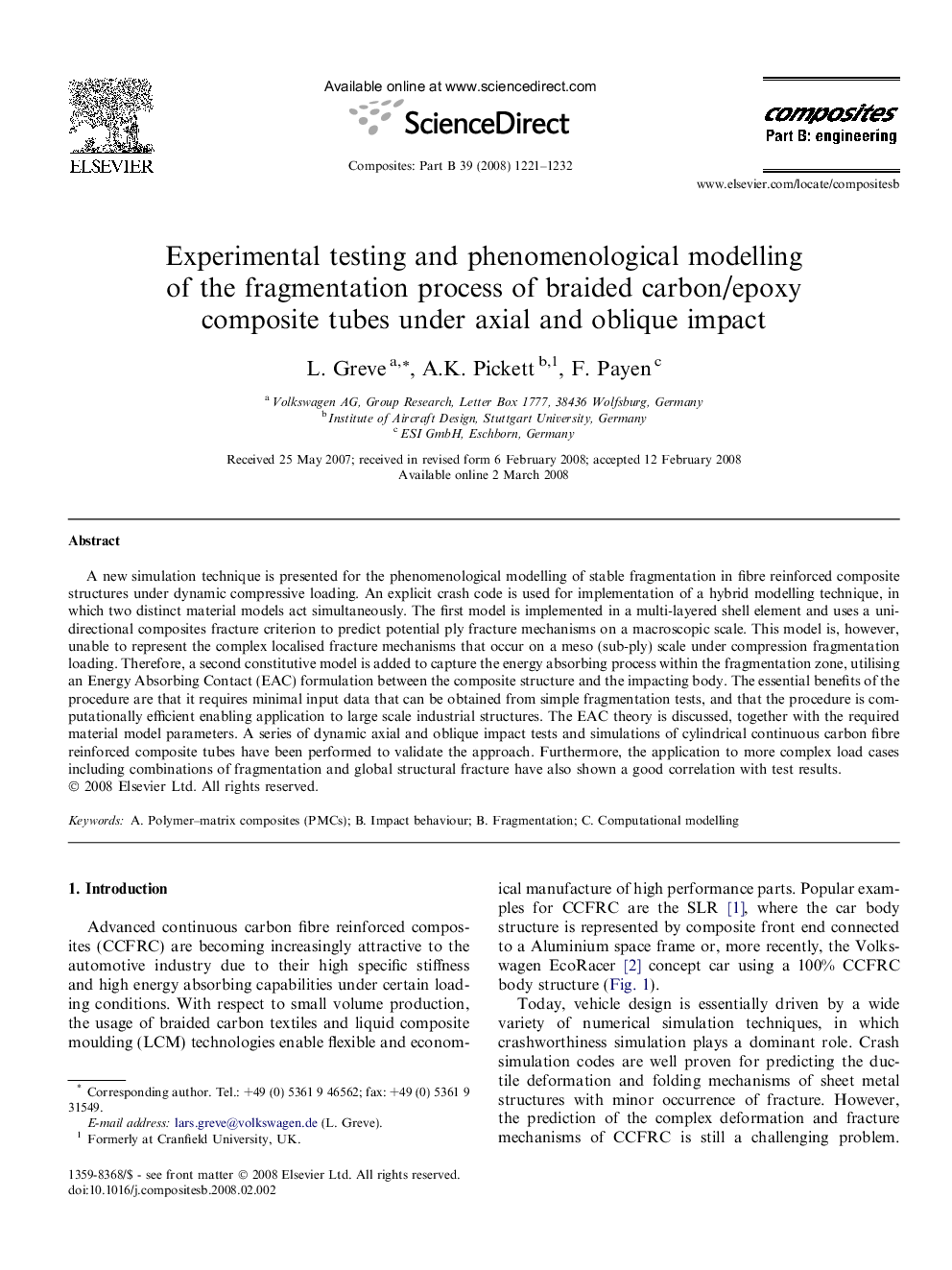| Article ID | Journal | Published Year | Pages | File Type |
|---|---|---|---|---|
| 819504 | Composites Part B: Engineering | 2008 | 12 Pages |
A new simulation technique is presented for the phenomenological modelling of stable fragmentation in fibre reinforced composite structures under dynamic compressive loading. An explicit crash code is used for implementation of a hybrid modelling technique, in which two distinct material models act simultaneously. The first model is implemented in a multi-layered shell element and uses a unidirectional composites fracture criterion to predict potential ply fracture mechanisms on a macroscopic scale. This model is, however, unable to represent the complex localised fracture mechanisms that occur on a meso (sub-ply) scale under compression fragmentation loading. Therefore, a second constitutive model is added to capture the energy absorbing process within the fragmentation zone, utilising an Energy Absorbing Contact (EAC) formulation between the composite structure and the impacting body. The essential benefits of the procedure are that it requires minimal input data that can be obtained from simple fragmentation tests, and that the procedure is computationally efficient enabling application to large scale industrial structures. The EAC theory is discussed, together with the required material model parameters. A series of dynamic axial and oblique impact tests and simulations of cylindrical continuous carbon fibre reinforced composite tubes have been performed to validate the approach. Furthermore, the application to more complex load cases including combinations of fragmentation and global structural fracture have also shown a good correlation with test results.
